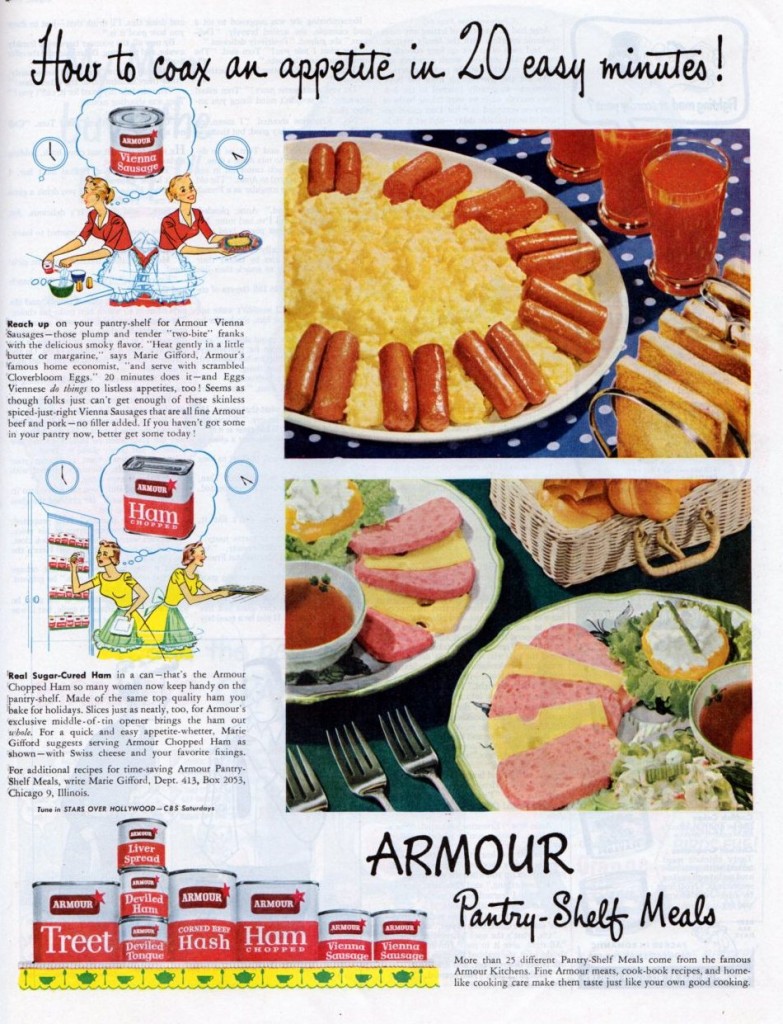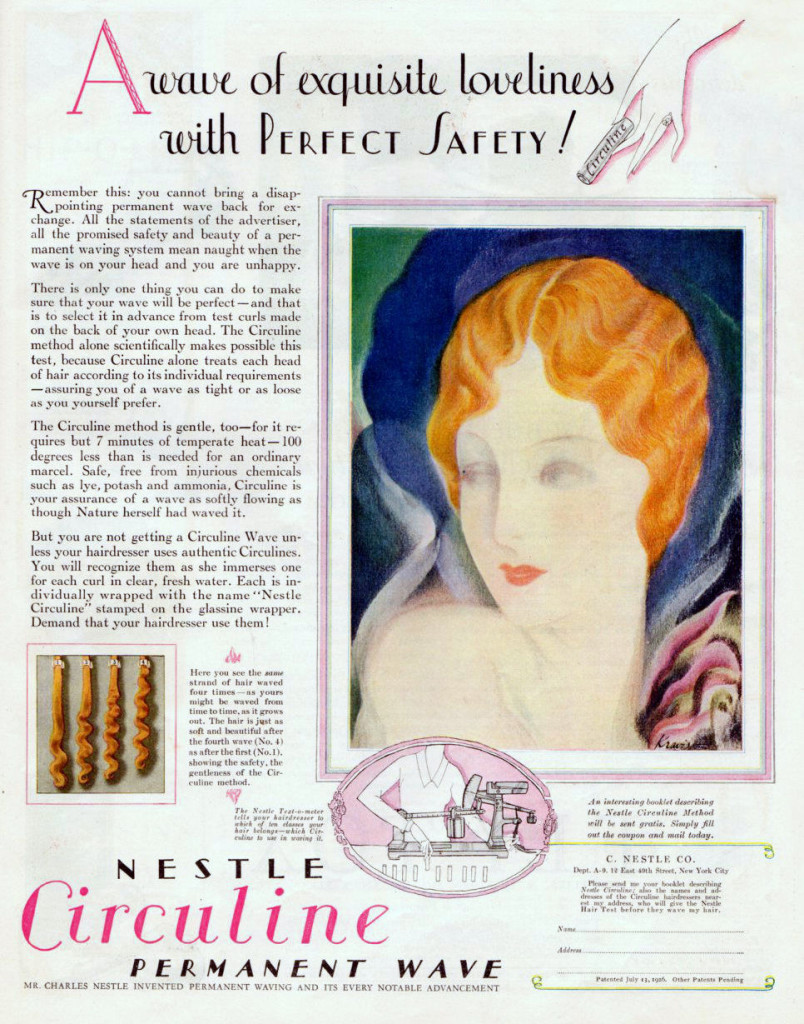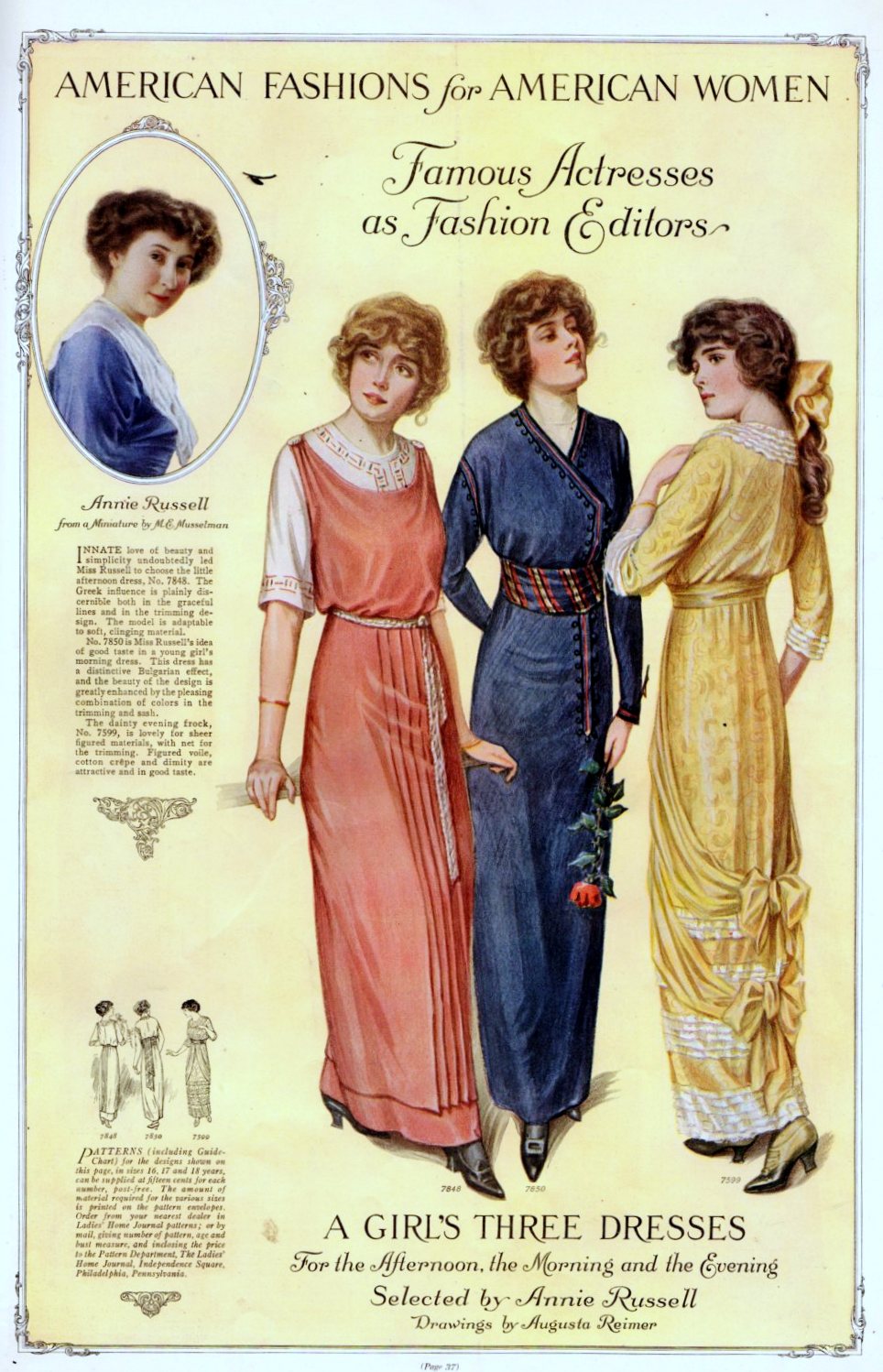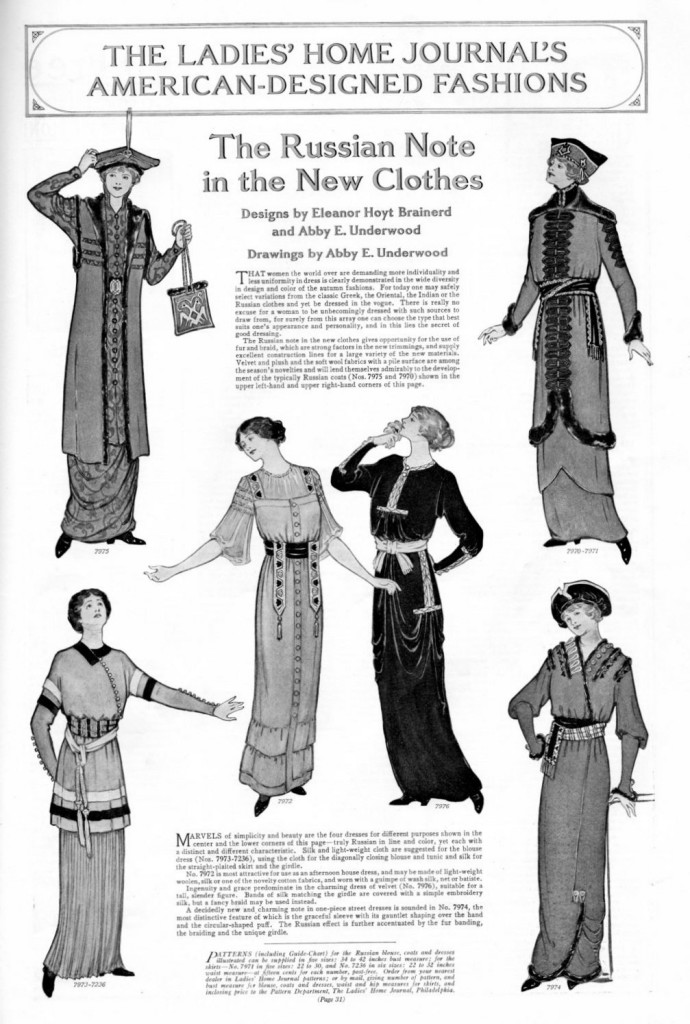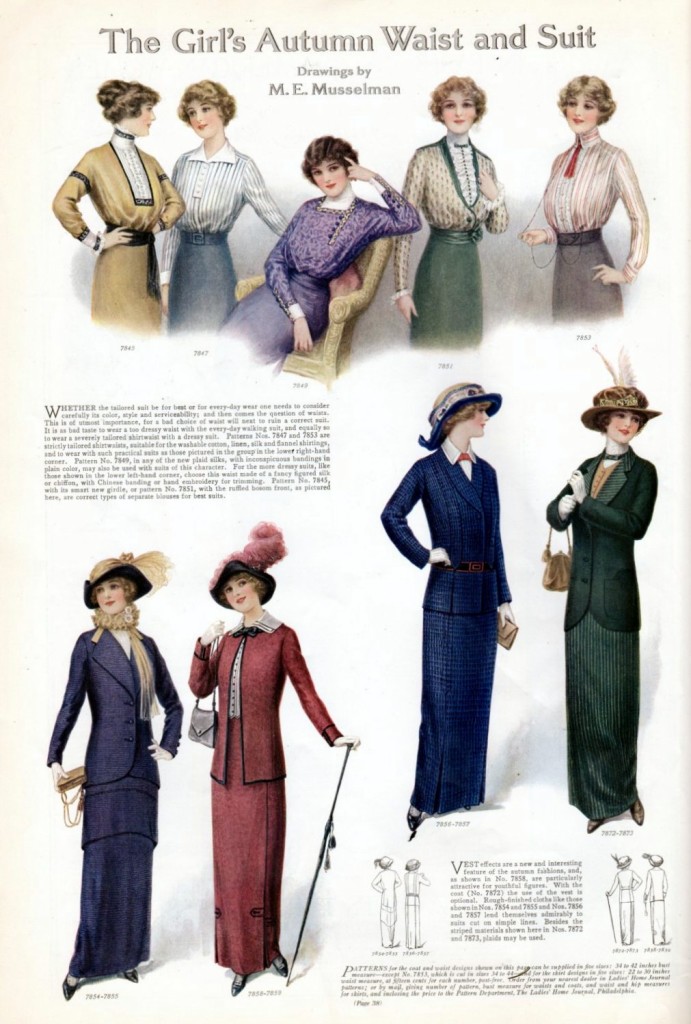“A man with broken arches cannot get into the army, because the military officials know that the resulting pain and nervous irritation absolutely unfit him for the work required. Yet we, who have what seem to us more or less important things to do in life – for ourselves, our families, our communities – permit weak insteps to go on protesting painfully and make no intelligent attempt to prevent the final breakdown…”
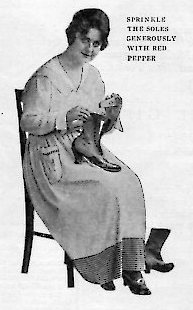
Sprinkle the soles generously with red pepper
This article, from the December 1917 issue of McCall’s magazine, is called “This Little Toe: common sense beauty talks.” Despite the fact that they call it a beauty talk, it reads more like a health article to me. Regardless, here are the various vintage tips for taking proper care of your feet, taken directly from the article. (I also have to apologize. When I was putting this entry together, I realized I am missing the last portion of the article. The next time I do my scanning I’ll be sure to find it and add it to this post.)
1. Try to be consistent about heels. If you mean to wear moderately high heels, always wear them; but don’t choose low heels for Monday and Tuesday, high heels for Wednesday and Thursday, and alternate the rest of the week.
Changing from low-heeled shoes to high heels is extremely injurious to the arch of the foot, for after training it to rest in one position you promptly throw it out of alignment, and give it a new adjustment to master.
2. If you already have flat feet, but the arch is not broken, set to work now to overcome this defect.
A flat foot is not beautiful, and that would be reason enough for avoiding its possession; but when you realize that it restricts you in every outdoor pleasure, sets up a nervous condition which affects your general efficiency, and inevitably results in pain and suffering, no argument is needed to make you take the matter seriously and get to work to prevent the flat foot from becoming a foot with a broken arch.
3. Special exercises are about the only way to strengthen and curve the arch again.
Perhaps the best exercise of all is one to be practiced in your bare feet. Tear paper into small strips, and lay in a perpendicular row on the floor, just to the left of your left foot. Now with the bare toes of your right foot, reach over and attempt to pick up the nearest strip of paper. Your foot will arch itself beautifully and exercise the muscles which are not doing their work.
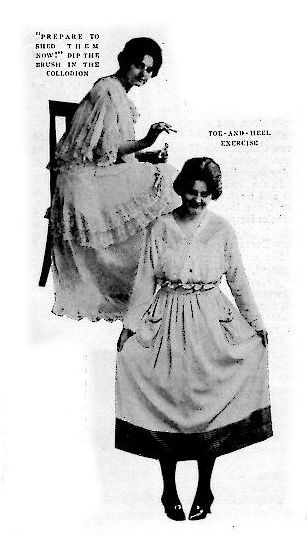
Shedding Corns, and a Toe-And-Heel exercise.
4. An exercise which is good for both ankle and instep is the Toe-and-Heel Exercise.
Stand with heels together, toes out. Now lift left heel and right toe from floor, and swing both toward the left. This will bring left toe and right toe together at the apex of a V. Lift left toe and right heel, and swing toward left, bringing left heel and right heel together at the apex of a V. Do this slowly at first, but with more rapidity as it becomes easy for you. You will find the exercise will take you from one side of the room to the other, and back again.
5. Moisture will inevitably render feet tender, as it renders the horny layer of the skin heavy and moist and causes pressure on the tender skin beneath.
Bathe the feet carefully twice a day, in warm, soapy water, rinse and dry carefully, then use the hands to promote friction, putting them side by side on the foot, and rubbing up toward the body with first one and then the other, in rapid succession, over and over again.
6. Put on fresh stockings every morning and always shake a little powder into them before donning.
7. If you are subject to chilblains, take extraordinary pains to keep the feet warm at all times.
Red pepper, shaken in the shoes or the stockings, will sting and warm the feet, and stimulate the circulation.
8. Paraphrasing Mark Antony, “If you have corns, prepare to shed them now!”
Soft corns are quite easily disposed of. Be careful in bathing the feet to see that they are thoroughly dried. If a soft corn begins to show itself, rub vaseline between the toes.
For a hard corn… Bathe the feet, dry, then with the brush dipped in the collodion, touch the corn.
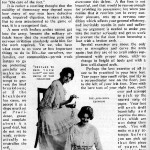
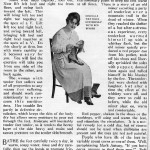

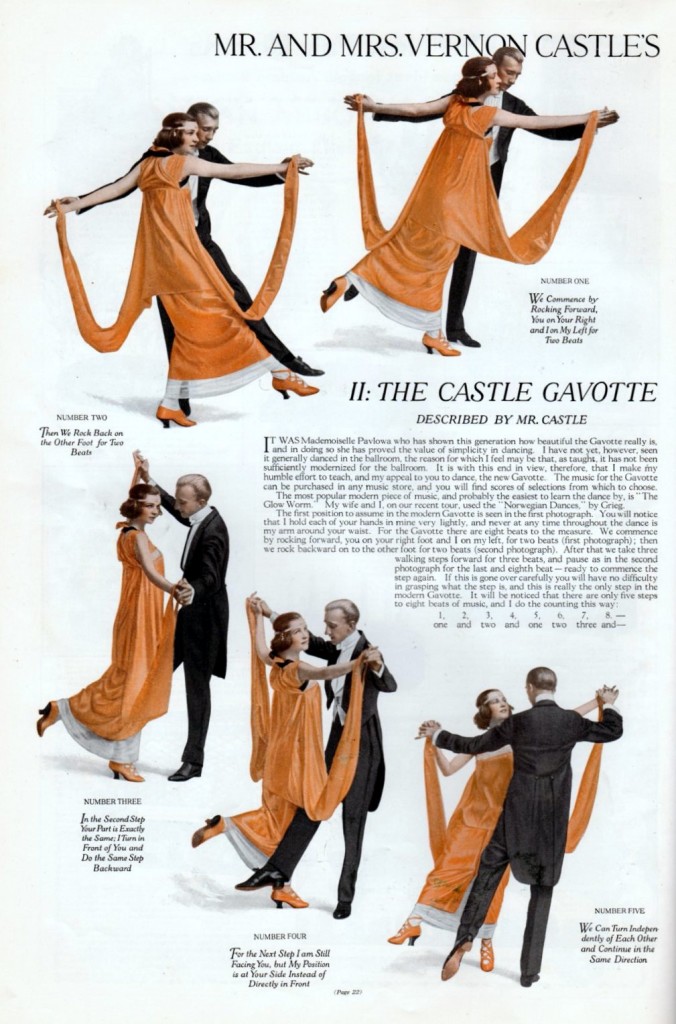
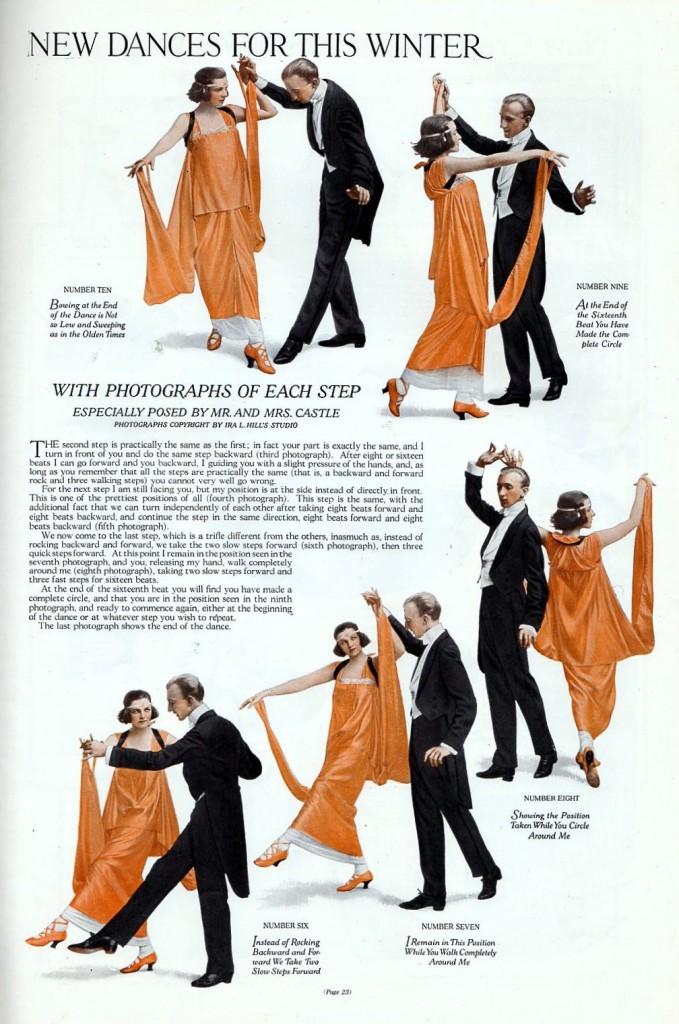
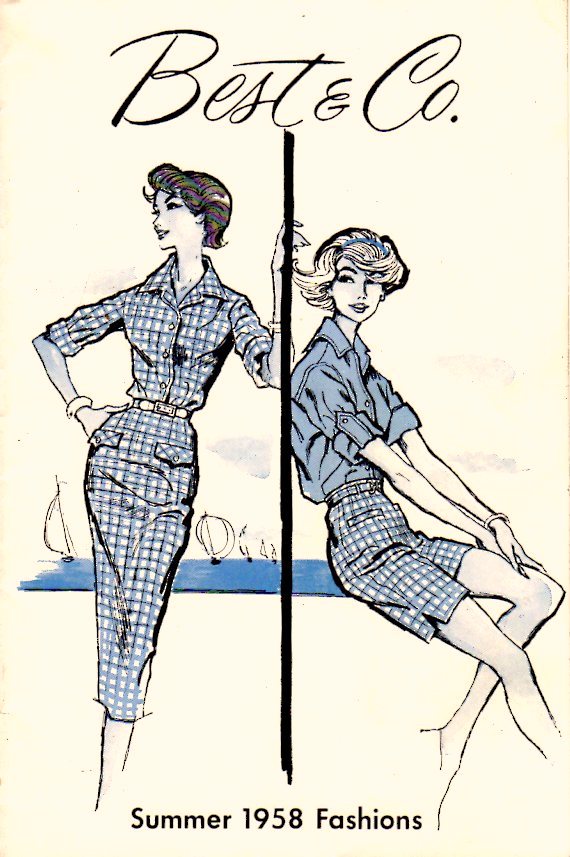
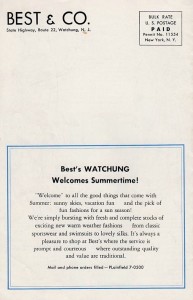
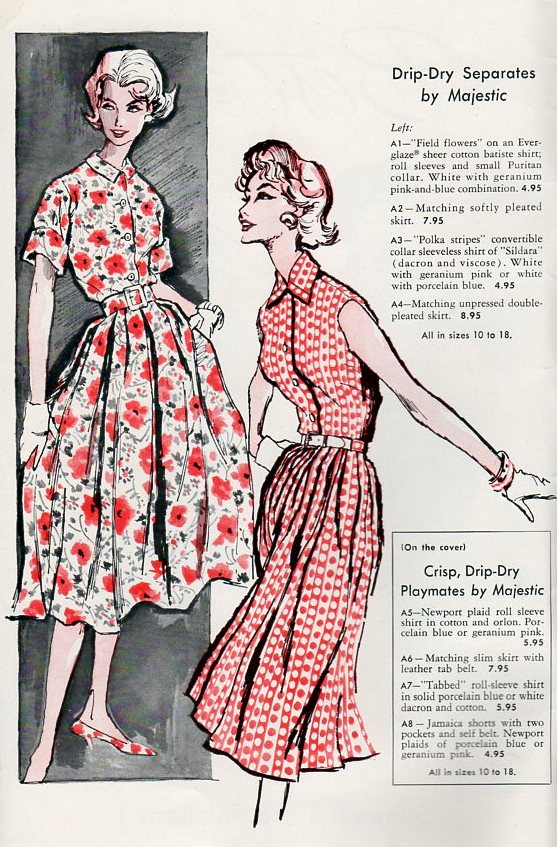
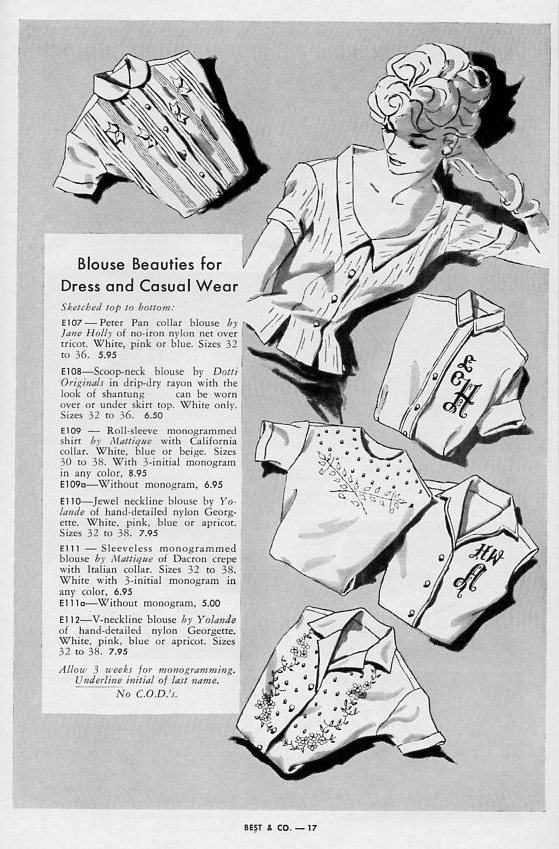
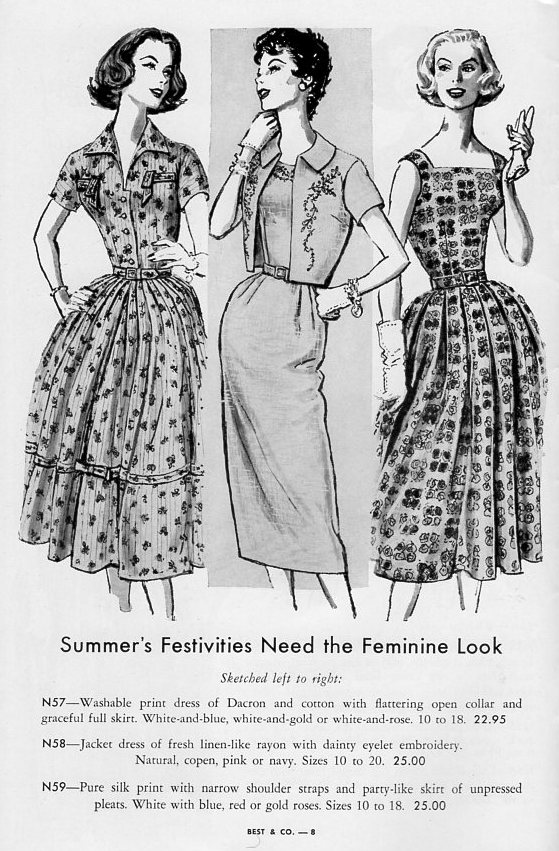
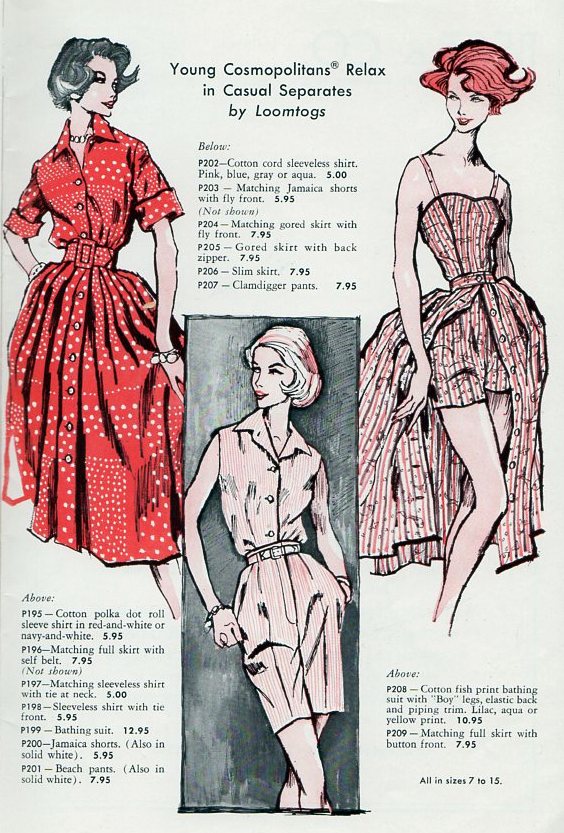
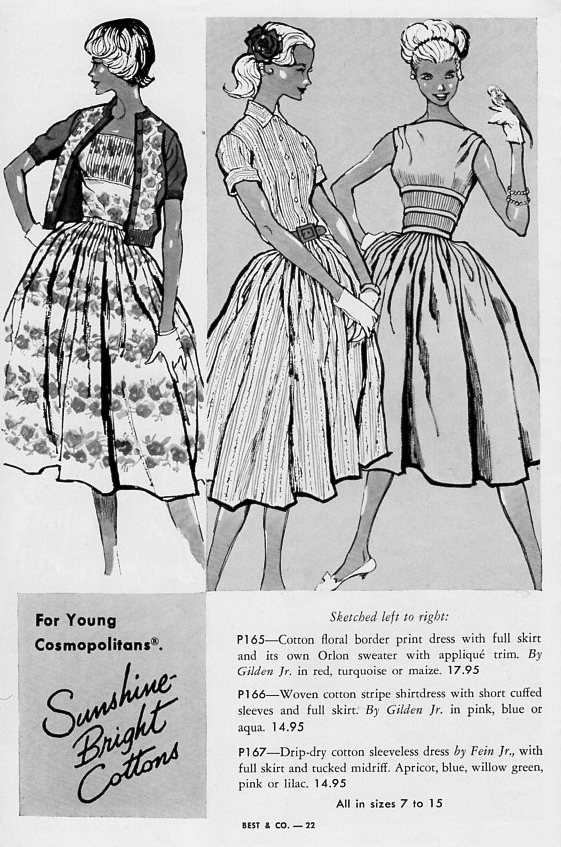
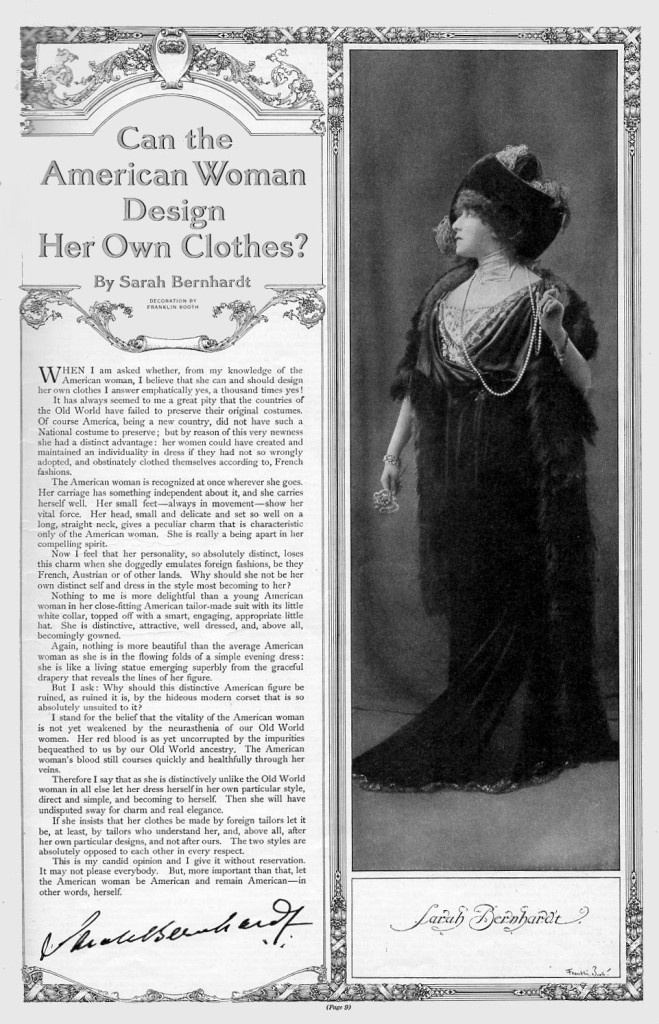
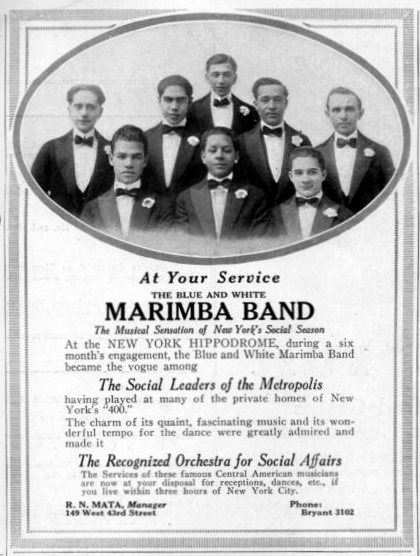
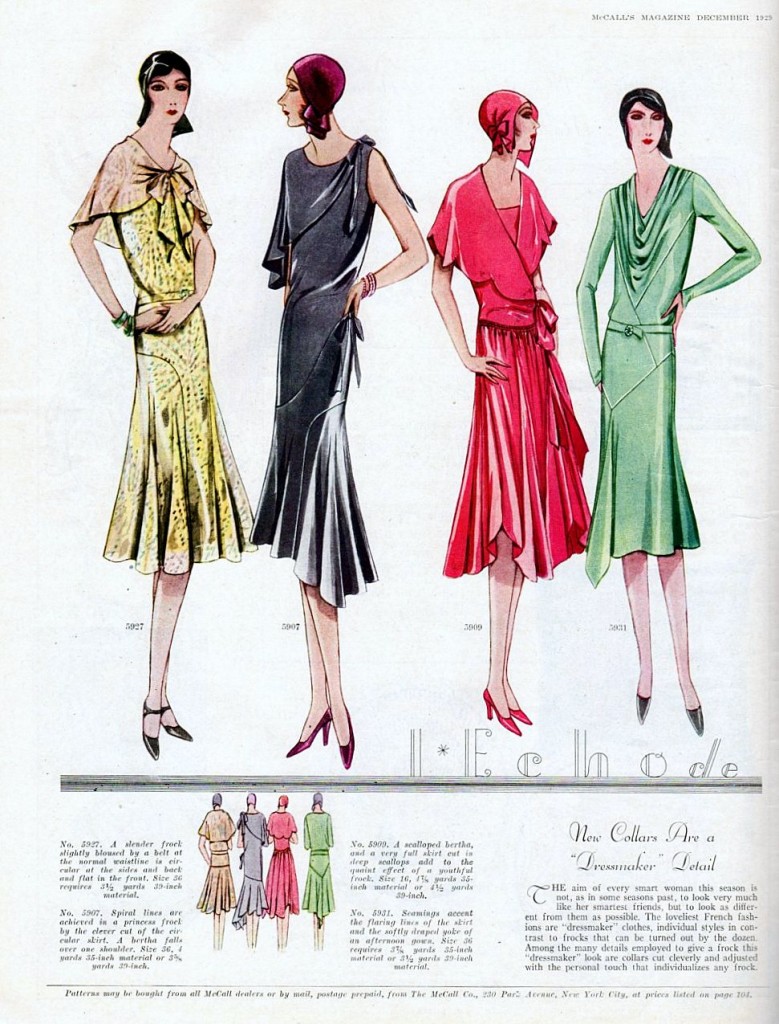
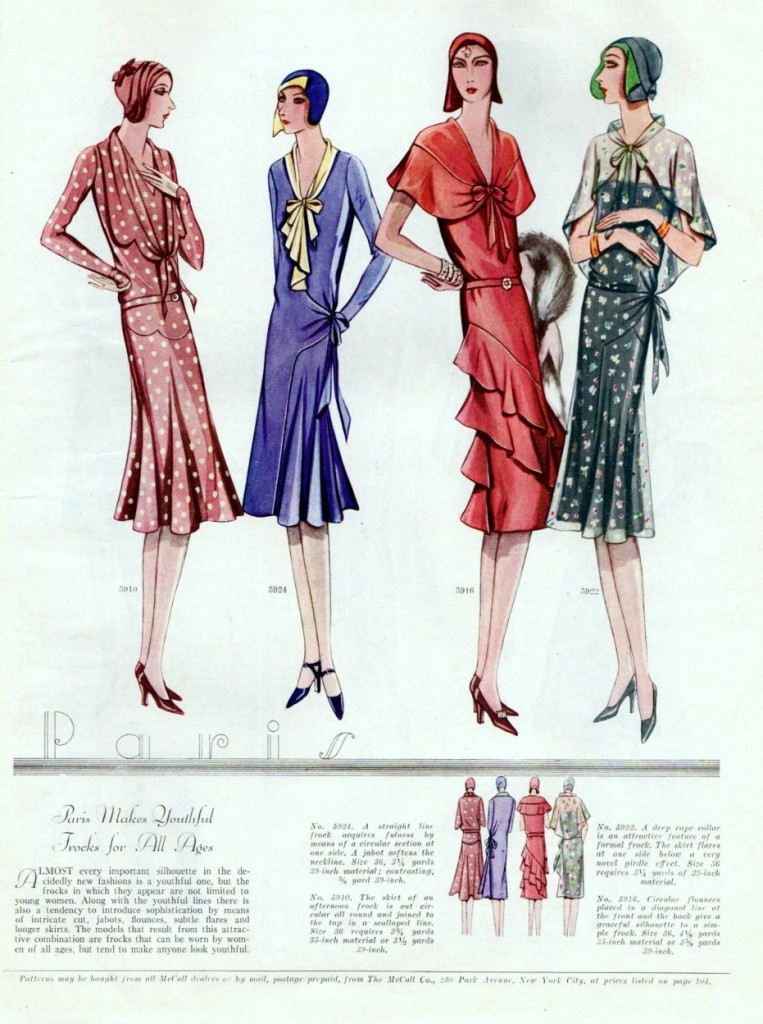
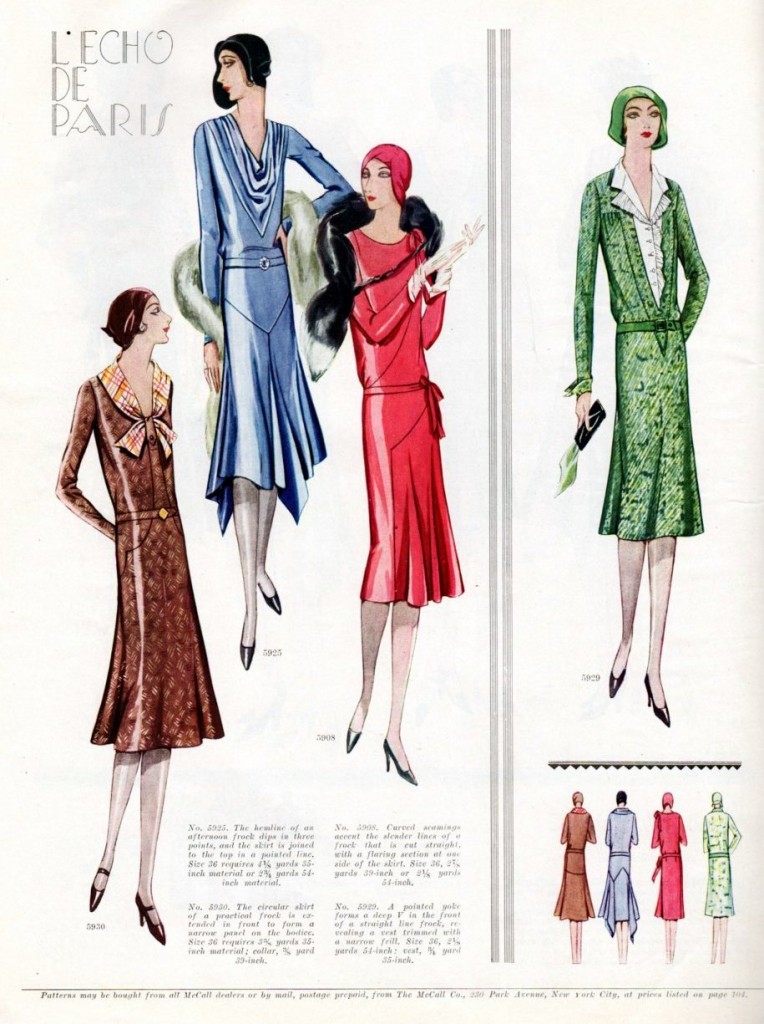
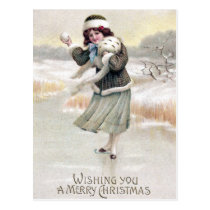 Old Fashioned Ice Skater Vintage Christmas Post Card
Old Fashioned Ice Skater Vintage Christmas Post Card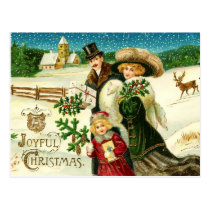 A Joyful Christmas Postcard
A Joyful Christmas Postcard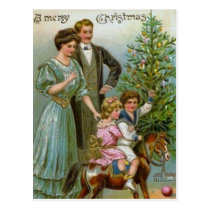 Old Fashion Christmas Post Cards
Old Fashion Christmas Post Cards Vintage Fashion Christmas Card
Vintage Fashion Christmas Card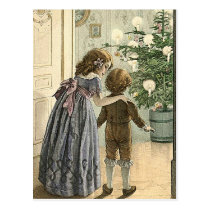 Wonders of Christmas -vintage christmas greeting Postcard
Wonders of Christmas -vintage christmas greeting Postcard Old Fashioned Christmas Greeting Card
Old Fashioned Christmas Greeting Card




